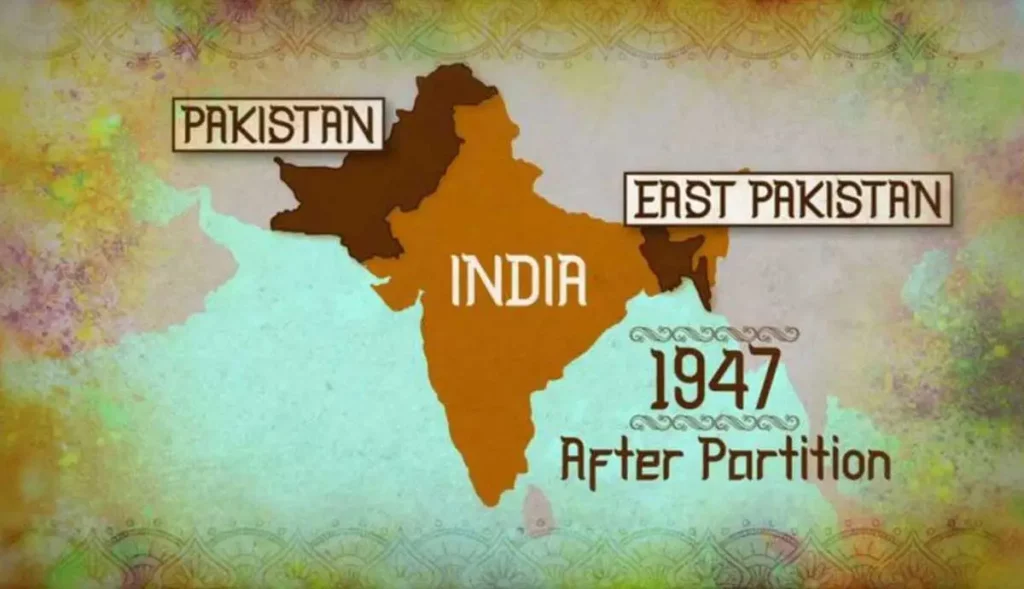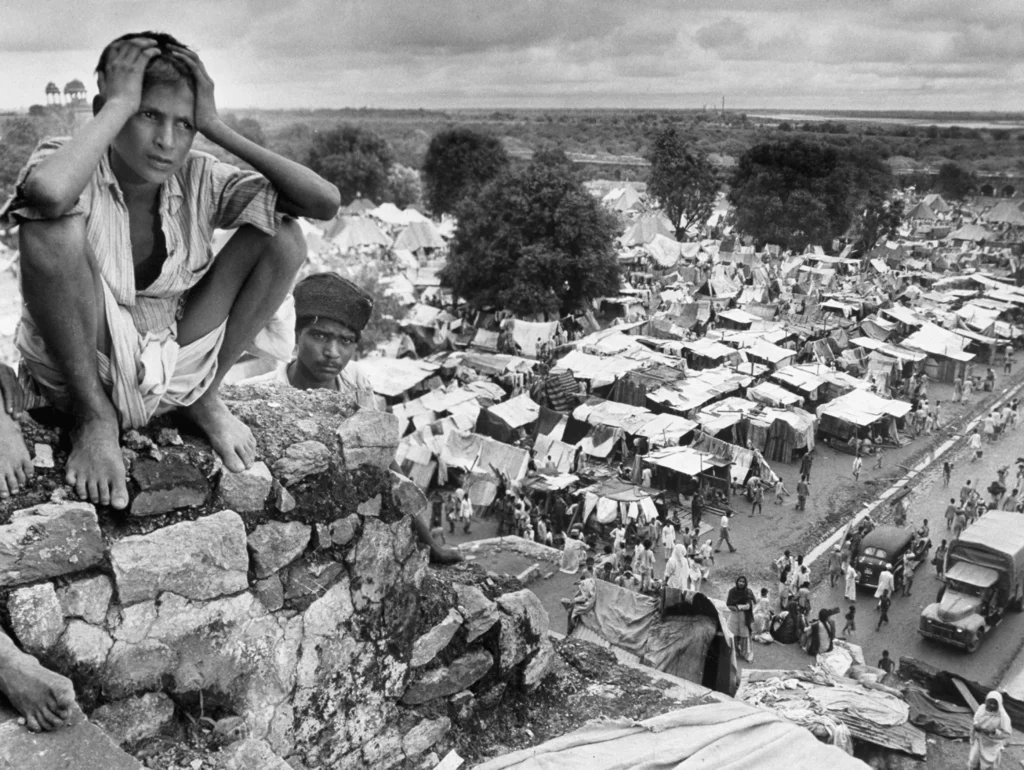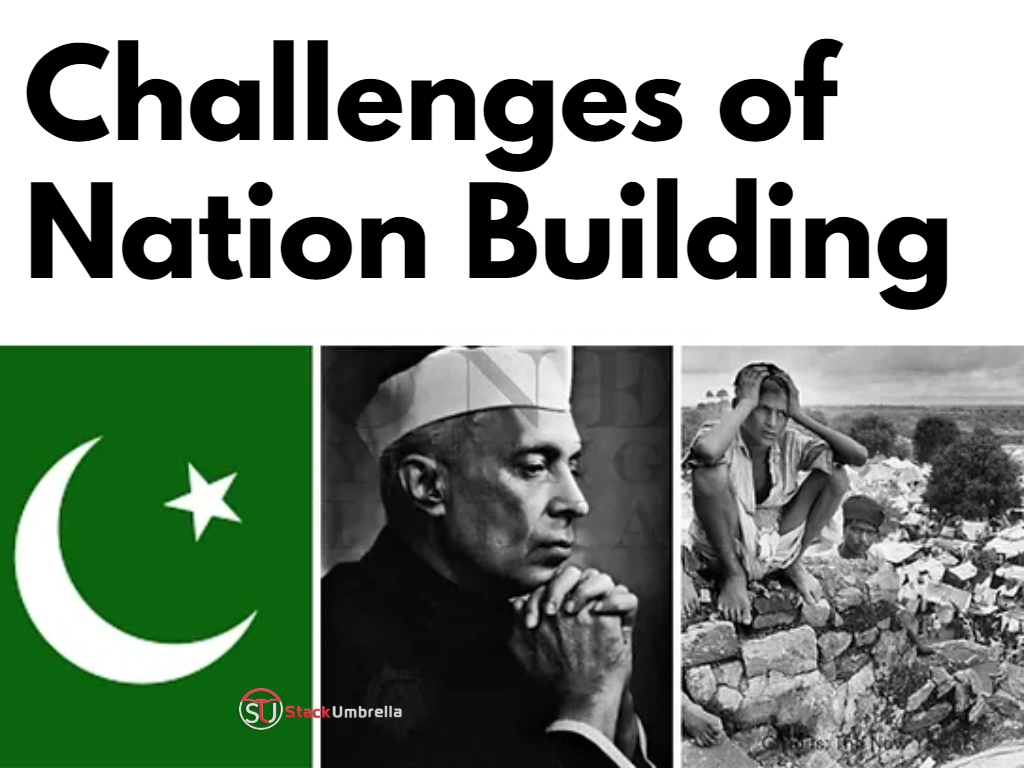Challenges of Nation Building: On 14-15 August, at midnight, India attained Independence. The first Prime Minister of Free India, Jawaharlal Nehru, addressed a special session of the Constituent Assembly that night.
This was the moment every Indian, at that time, was waiting for. You must have read in your history textbooks and been taught by the teachers about the various national movements. There were many voices, and opinions of different revolutionaries during the movements but there were two definite goals on which almost everyone agreed,
- One, that after independence, the country shall run through democratic government and,
- Two, that the government will run for the good of all the citizens, particularly the poor and the socially backward and disadvantaged groups.
Though this was not going to be easy, since India was born in very tough circumstances. No other nation was born in such a difficult situation as India was in 1947.
Freedom came with the partition of the country. 1947 was a year of violence and unprecedented turmoil. At that time, the leaders had to face multiple challenges to shape the nation.
The Major Challenges of Nation Building

Credit-Google
The first and immediate challenge was to shape a nation that was full of diversity. India is a land full of diversity. People speak different languages and follow different cultures and religions and at that time it was widely believed that a country full of such kinds of diversity could not remain longer together.
There were serious questions regarding the country’s future, Would India survive as a unified country? How the integration of the territories of India would be achieved? How did Independent India respond to these challenges? To what extent did India achieve the various objectives set out by the Constitution?
Partition: Displacement and Rehabilitation
Challenges of Nation Building: On the day of Independence, that is, on 14-15 August, two nation-states came into existence – India and Pakistan. According to the ‘Two nations theory’, India consisted of two ‘people’, Hindus and Muslims. The two-nation theory was advanced by the Muslim League. And, because of this theory, they demanded Pakistan, a separate country for the Muslims.
Partition Process
Challenges of Nation Building: It was finally decided India would be divided into two countries, India and Pakistan. The division of the country was based on the principle of religious majorities.

Credit-Google
This idea might appear simple but it was accompanied by all sorts of difficulties.
- First, there was no single area of the Muslim majority in British India. These were two different areas where the majority of the Muslim population was concentrated, one in the East and one in the west. These two parts could never be joined. So, it was decided that Pakistan would comprise two regions, which are West and East Pakistan.
- Second, not all Muslim areas wanted to be in Pakistan. Khan Abdul Gaffar Khan, known as the Frontier Gandhi was completely opposed to the two nations theory. Though, his voice was ignored.
- Third, the two Muslim-majority provinces of British India, Punjab, and Bengal had large areas where the non-Muslims were in majority.
- Fourth, There was a problem of ‘minorities’ on both sides of the boundary. Lakhs number of Hindus and Sikhs in Pakistan and an equally large number of Muslims in India found themselves entangled.
Consequences of Partition
Challenges of Nation Building: There were so many atrocities and killings on both sides of the border. In the name of religion, people of one community were ruthlessly killing the people of another community.

Credit-Google
Cities like Amritsar and Lahore were considered Communal zones. People went through immense suffering. Minorities on both sides of the border had to flee from their home and secured themselves in refugee camps.
Also Read : Contribution Made by Ancient Indian to Science and Technology You Never Knew!
Integration of Princely States
Challenges of Nation Building: Before Independence, British India was divided into the British Indian Provinces and the Princely States. The British Indian Provinces were directly governed by the British government and several large and small states were ruled by princes, called the Princely States.

Credit-Google, Self-Study History
Just before the independence, it was announced that by the end of British rule, all the Princely States would become legally independent. The British government took the view that the princely states are free to join either India or Pakistan or remain independent if they wish. This was a
Since then the problem started. There was a serious problem that could threaten the very existence of a united India. Firstly, the ruler of Travancore announced that they had decided to remain independent. The Nizam of Hyderabad and Nawab of Bhopal furthermore announced the same decision.
Government’s Approach Towards The Issue
Challenges of Nation Building: Sardar Patel was India’s, Deputy Prime Minister and the Home Minister of Independent India. He played a crucial role in negotiating with the rulers of the princely states. With his diplomatic skills, he brought almost all the states into the Indian Union.

Credit-Google
The rulers of most of the states signed a document called the Instrument of Accession, through which the states agreed to become the part of Indian Union. The Princely States of Junagadh, Kashmir, Hyderabad, and Manipur proved more difficult than the rest to become the part of Union of India.
Junagarh’s issue was then resolved after a plebiscite which confirmed the citizen’s desire to join India.
Also Read: Paying Tribute To Sardar Vallabhbhai Patel
Hyderabad
Challenges of Nation Building: In Hyderabad, the peasantry class was the victim of Nizam’s oppressive rule, and they rose against him. The people of Hyderabad joined a movement in large numbers, including women, against the Nizam.
The Nizam retaliated by unleashing a paramilitary force known as Razakars on the people. The Razakars murdered people, raped women, and looted the public. Finally, in 1948, the Indian government ordered Indian Army to tackle the situation.
The army took control of Nizam’s forces. Nizam eventually had to surrender. This led to the accession of Hyderabad to India.
Manipur
Challenges of Nation Building: The Maharaja of Manipur Bodhachandra Singh signed the Instrument of Accession with the Indian government with the condition of having internal autonomy.
In September 1949, the Government of India succeeded in pressurizing the Maharaja into signing a Merger Agreement.
Reorganization of States
Challenges of Nation Building: Integration of princely states was one of the processes of nation-building. The other challenge was to draw internal boundaries for the Indian States. The boundary was to be drawn in such a way that linguistic diversity could be reflected without affecting the unity of the nation.
After partition, the leaders felt that setting boundaries based on languages might lead to separatism and disruption. The government decided to postpone the matter.
This decision of national leaders was challenged by Telugu-speaking areas of present-day Tamil Nadu, parts of Andhra Pradesh, Kerela, and Karnataka. They protested for a separate Andhra.
The movement for separate Andhra was called the Vishalandhra movement. The movement gathered momentum and Congress leader Potti Sriramulu went on an indefinite fast that led to his death. This resulted in violent outbursts and finally, the Prime Minister announced the formation of a separate Andhra state in 1952.
The protest for the formation of the states on a linguistic basis also got spread in other parts of the country. The protests forced the government to appoint State Reorganization Commission and the commission in its report accepted the creation of States on a linguistic basis. The State Reorganization Act was passed in 1956 and this led to the formation of 14 States and 6 union territories.
The creation of States on a linguistic basis was found to be more democratic.
Also Read: Horse Power



